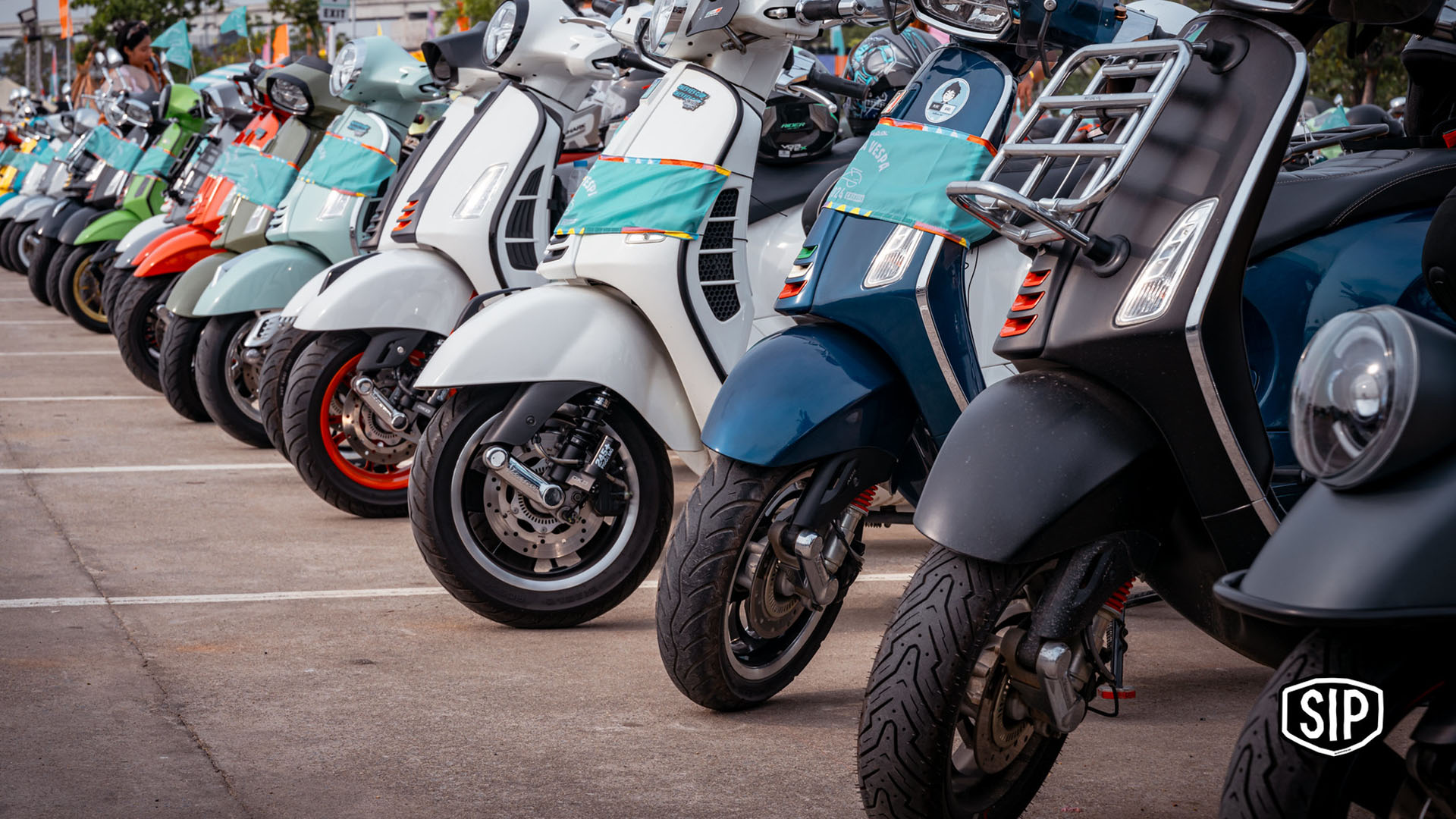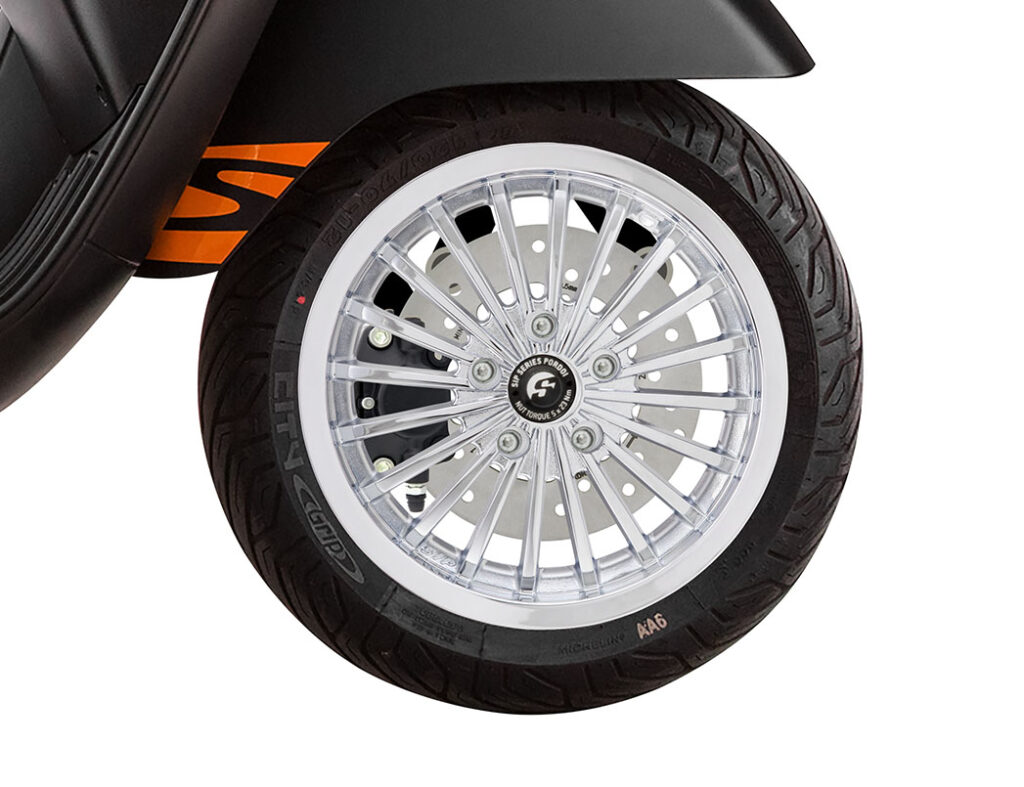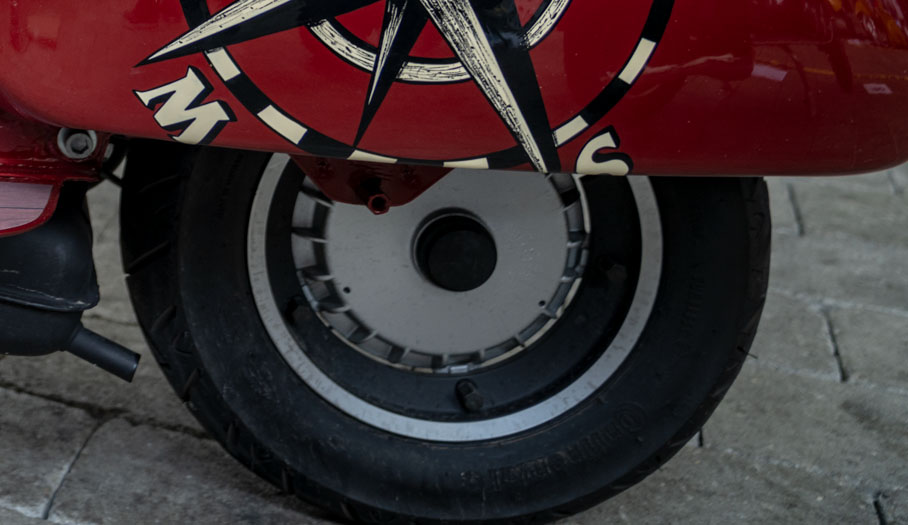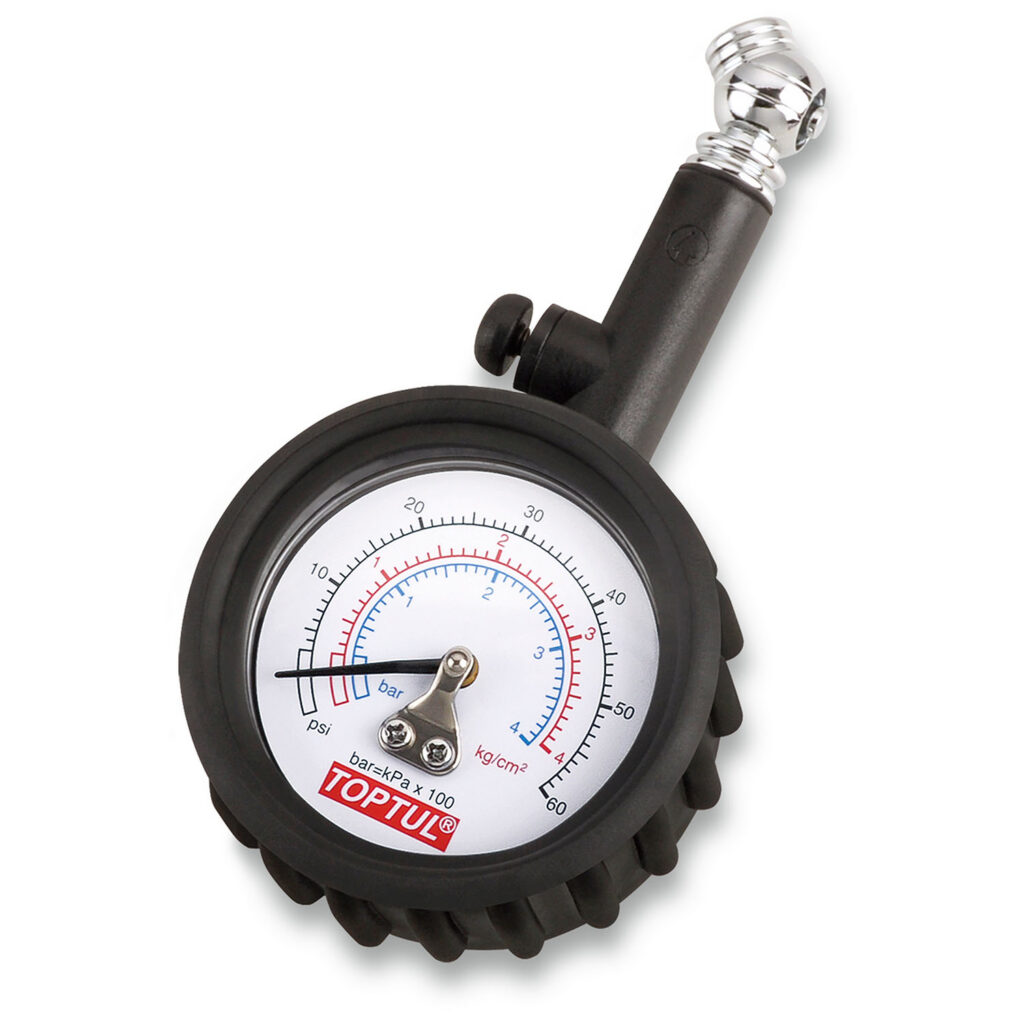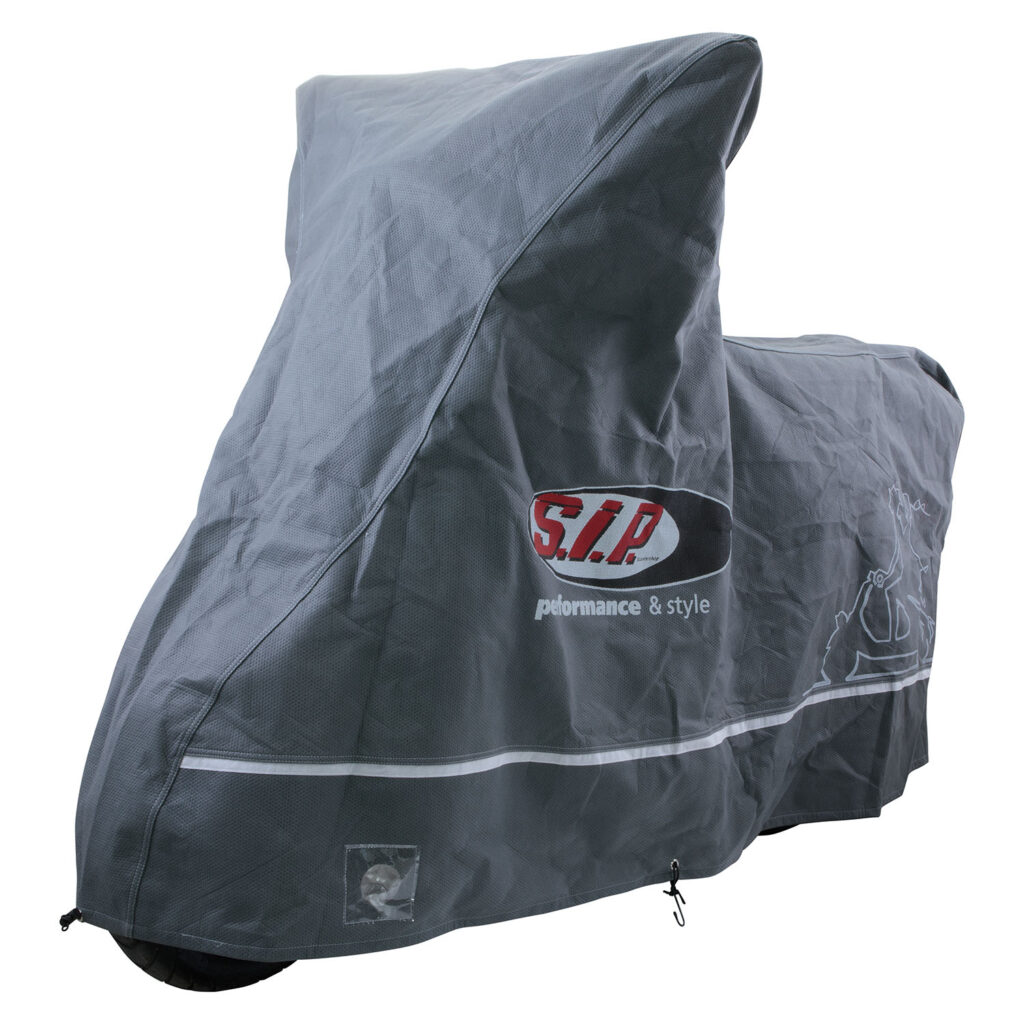While we looked at the different types of tires in the last part of the series, the focus below is on the rims and all other information. Because a tire rarely, or rather never, comes alone. Mounted on a rim and filled with the right air pressure, the tires of a Vespa not only form the connection between the scooter and the road, but are also crucial for safety, riding comfort and the overall performance of the Vespa. We will therefore be looking at different types of rims, tire maintenance, the correct tire pressure and other special features.
The first article in the series can be read here: “A matter of type: the right choice of tires for Vespa”
Types of rims
There are two main types of rims used on Vespa scooters in the various model years: the classic steel rims and the more modern alloy rims. Another crucial and, above all, safety-relevant difference is the distinction between TT and TL. These two letters stand for Tubetype, i.e. rims with a tube and tire, and Tubeless, i.e. tubeless rims.
Steel rims are the more traditional rims and are often found on older Vespa models. They are robust and relatively inexpensive, making them a good choice for everyday use. However, they are more susceptible to rust and require regular maintenance to prolong their life. In the event of damage, a sudden loss of air is prevented, causing the air pressure to drop slowly.
Burst inner tubes are therefore a thing of the past. Valve ruptures or punctures caused by the hose becoming trapped are also a thing of the past, providing a great deal of added safety. SIP Scootershop from Landsberg am Lech has emerged as the absolute market leader for tubeless rims, stocking the tubeless rims developed in-house in all standard sizes.
The rims developed by SIP have been successfully verified by the Federal Motor Transport Authority and can therefore be used as legal vehicle components. SIP has received the general operating license (ABE) for the SIP 8106 rim. As a result, the rims have borne the KBA 51612 type mark since 02/2015 and can therefore be used legally on German roads.
Light alloy rims, on the other hand, are particularly common on newer Vespa models and offer several advantages compared to steel rims. They are lighter, which leads to better driving dynamics and fuel efficiency. They are also often more resistant to corrosion and offer a more modern, aesthetically pleasing design. Alloy wheels also require maintenance, especially to ensure that there are no cracks or deformations that could compromise safety.
Tire maintenance
Tire maintenance is an essential part of car care. Here are some important points to keep in mind:
1. regular visual inspection: Check the condition of the tires regularly. You should look out for signs of cracks, blisters or uneven wear. These can indicate problems such as incorrect tire pressure or misalignment of the wheels.
2. measure tread depth: Tread depth is crucial for safety, especially in wet conditions. The legal minimum value for tread depth is 1.6 mm. In this case, a simple tread depth gauge can help to check the condition of the tires. A deeper tread ensures better traction and safer handling.
3. check tire pressure: The correct tire pressure is very important for driving stability, fuel consumption and tire life. Too low a pressure can lead to increased wear and poorer handling, while too high a pressure can impair driving comfort. It is best to have your own tire pressure indicator for this purpose.
The correct tire pressure is essential for the performance and safety of your Vespa scooter. The recommended tire pressure for your Vespa can be found in the operating instructions or on a sticker on the scooter (usually on the frame or under the seat).
You should pay particular attention to measuring the tire pressure when the tires are cold, as the pressure increases as they warm up during the ride. Regular measurement (ideally every two weeks) is recommended. As soon as you notice that the pressure is below the recommended value, it should be adjusted to the correct value immediately. Too low a pressure can lead to increased tire wear and poorer handling, while too high a pressure can impair comfort and increase the risk of tire blowouts.
Other special features of tires
In addition to regular maintenance and the correct tire pressure, there are a few other points that Vespa riders should be aware of.
Storing the tires:
- If the Vespa is not used for a longer period of time, for example in winter, the tires should be stored carefully.
- Ideally in a cool, dry place that is protected from direct sunlight.
- If possible, the scooter should be jacked up to take the weight off the tires and avoid deformation.
This creates the ideal conditions for having fun with the tires and the Vespa for a long time.
Conclusion
The right rims, regular tire maintenance, the correct tire pressure and additional care are crucial to ensure the performance and safety of the Vespa scooter. By paying careful attention to these points, not only can the life of the tires be extended, but everyone can also enjoy a better riding experience and increased safety. With this in mind, have a great late fall with great tours!

